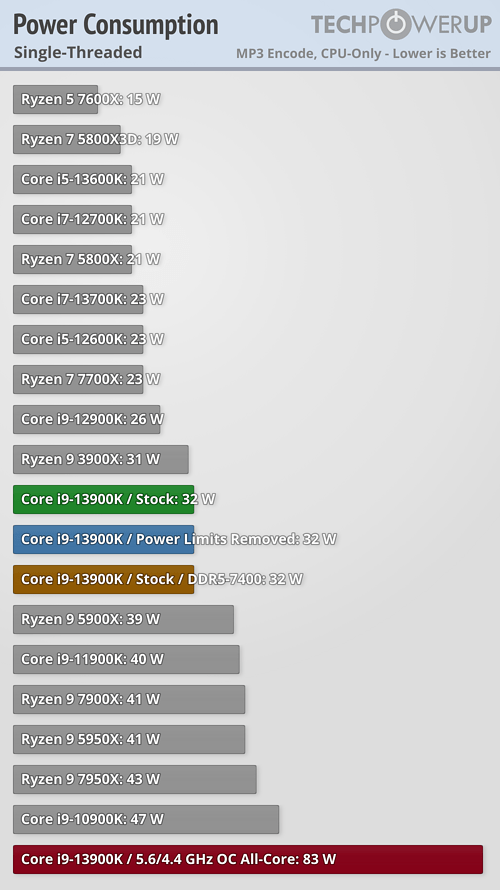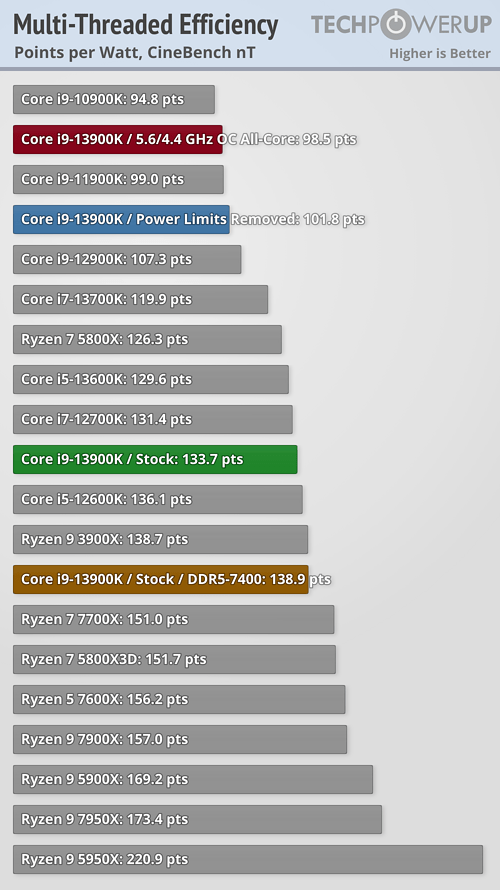TSMC produces its first batch of 3nm chips, says yields are good.
TSMC Kicks Off 3nm Production: A Long Node to Power Leading Chips : Read more
TSMC Kicks Off 3nm Production: A Long Node to Power Leading Chips : Read more
The next Ryzen will be hybrid? Is there a good source on that?Just in time for AMD's Zen 5 Processors.
Can't wait to see what a big.LITTLE Ryzen can do
There are about 0.5 per paragraph. Not ideal, but I'll happily put up with it for the free news coverage.Meanwhile, I'm struggling to read a short article with 5 meanwhiles.
There are about 0.5 per paragraph. Not ideal, but I'll happily put up with it for the free news coverage.
Anton has written a lot about the fabrication side of the semiconductor industry for both this site and Anandtech. It's an area he seems to know quite well.
AMD was forced to match intel stock power consumption and still barely matched 13th gen, they have to do something to cram more performance into the same power envelope if they want to keep making money.The next Ryzen will be hybrid? Is there a good source on that?
Zen4 cores are more area-efficient than Golden Cove, so there wouldn't seem to be as much upside for them to do it. Still, I could believe it.
They haven't really matched 13th in power consumption, they are still more efficient and less power hungry.AMD was forced to match intel stock power consumption and still barely matched 13th gen, they have to do something to cram more performance into the same power envelope if they want to keep making money.
All big cores just doesn't cut it, with too many of them they lose too much performance due to having to share the available power.
And no, there is no good source on that, just speculations because tsmc does a performance and a efficient version of all their nodes and it just makes sense that amd will have to do hybrid at some point.
Oh, tsmc/amd is far behind both power consumption as well as efficiency.They haven't really matched 13th in power consumption, they are still more efficient and less power hungry.
All power measurements on this page are based on a physical measurement of the voltage, current and power flowing through the 12-pin CPU power connector(s), which makes them "CPU only", not "full system." We're not using the software sensors inside the processor, as these can be quite inaccurate and will vary between manufacturers. All measurements are collected and processed at a rate of 30 data points per second, on a separate machine, so the power measurement does not affect the tested system in any way. Our new data processing pipeline allows us to link recorded data precisely with benchmark runs, so we can easily create the charts below.


It's a mistake to focus on single-threaded efficiency, because these Ryzens have the overhead of the I/O die. As they increase the number of active threads, Ryzens amortize that overhead, and eventually overcome it.Oh, tsmc/amd is far behind both power consumption as well as efficiency.
LOL, nice try. We all know little cores are more efficient. AMD is at a disadvantage for not having a hybrid CPU, but it's truly a testament to Zen 4 that they're able to overcome that and the IOD overhead, in order to pull out a win on multi-threaded efficiency.AMD only pulls ahead in multi because they use more big cores and benchmarks focus more on software that utilizes full cores better.

That doesn't change the fact that ryzen does need the IO to operate and that they need that much power to operate a single core, also intel also needs IO to operate so the comparison is on a fair level.It's a mistake to focus on single-threaded efficiency, because these Ryzens have the overhead of the I/O die. As they increase the number of active threads, Ryzens amortize that overhead, and eventually overcome it.
More power efficient,yes. That's my whole point, that's why I said that it would make sense for AMD to adopt them as well.LOL, nice try. We all know little cores are more efficient.
Meanwhile, I'm struggling to read a short article with 5 meanwhiles.
Not the APUs, at least so far. The energy-efficiency of those CPUs is much better than the chiplet versions.That doesn't change the fact that ryzen does need the IO to operate
The issue is what you're trying to infer from that data. If you're trying to infer some general truth about the Zen 4 core, then it's a poor test.and that they need that much power to operate a single core, also intel also needs IO to operate so the comparison is on a fair level.
It's not really that the I/O Die is inefficient, it's more that it's even there. The chip-to-chip interconnect, itself, burns power.Yeah AMD has a completely inefficient IO chip, whos fault is that?!
When you start with a collection of P-cores and then add E-cores, the resulting efficiency only improves. So, your argument that Ryzen 7000 somehow wins at multithreaded efficiency because it has only P-cores is completely bonkers. That's a liability it has to overcome, and it does!More power efficient,yes. That's my whole point, that's why I said that it would make sense for AMD to adopt them as well.
But they don't produce the same amount of performance as a big core even when the big cores are power limited.
Not CPUs, at least. However, AMD is releasing Zen4-based low/mid-range laptop APUs made on the N4 node, in 2023.Can we hope in a cpu gpu refresh ? like the same chips today made in 3nm ? ...soon ?
If you can find a single core test that shows actual power consumption like the one I linked then please share it.Not the APUs, at least so far. The energy-efficiency of those CPUs is much better than the chiplet versions.
There is nothing to infer here, to make one single zen or 13th gen core do that work you will need that much power.The issue is what you're trying to infer from that data. If you're trying to infer some general truth about the Zen 4 core, then it's a poor test.
Again intel also needs extra stuff to make things work.It's not really that the I/O Die is inefficient, it's more that it's even there. The chip-to-chip interconnect, itself, burns power.
At least for 12th gen 2 P-cores have a result of about 5000 which drops to about 4000 with more cores because of power.When you start with a collection of P-cores and then add E-cores, the resulting efficiency only improves. So, your argument that Ryzen 7000 somehow wins at multithreaded efficiency because it has only P-cores is completely bonkers. That's a liability it has to overcome, and it does!
You lost the plot. We were talking about energy-efficiency. Running all 8 E-cores uses nowhere near the full package power budget. This shows them using only 48 W.At least for 12th gen 2 P-cores have a result of about 5000 which drops to about 4000 with more cores because of power.
Two e-cores are about 2000 and also reduce as more and more cores share power.
If you take a look here, the 8 p-cores provide 18820 which comes out to 2352 per group of core+HTT
While if you subtract the dual core+HTT score of the p-cores(5303) from the e-cores result then 12844-5303=7541 and divided by the 8 e-cores that is a score of 942.
So the tldr:
8 big cores while all of them at full load=each one( +HT) gets 2352,
all of 8 e-cores running at full load= each one gets 942
A 16 p-core CPU from intel that could get enough power (or if zen 4 could) , would blow the 13900k away.
But that is the issue here, you can't have many big cores running with all the power they need.
https://www.pugetsystems.com/labs/a...-e-cores-compare-2289/#Efficient-Core_Scaling
You lost the plot. We were talking about energy-efficiency. Running all 8 E-cores uses nowhere near the full package power budget. This shows them using only 48 W.
...
Even though they don't perform as well as P-cores, their energy-efficiency is much better. The more E-cores you add into the mix, the better your overall energy-efficiency gets.
I don't know what plot you where following.Oh, tsmc/amd is far behind both power consumption as well as efficiency.
AMD only pulls ahead in multi because they use more big cores and benchmarks focus more on software that utilizes full cores better.
You did, though. You just quoted it. You've even agreed with me that going hybrid would help AMD's efficiency. So, I'm having trouble believing you. I think you were trying to change the subject.I don't know what plot you where following.


